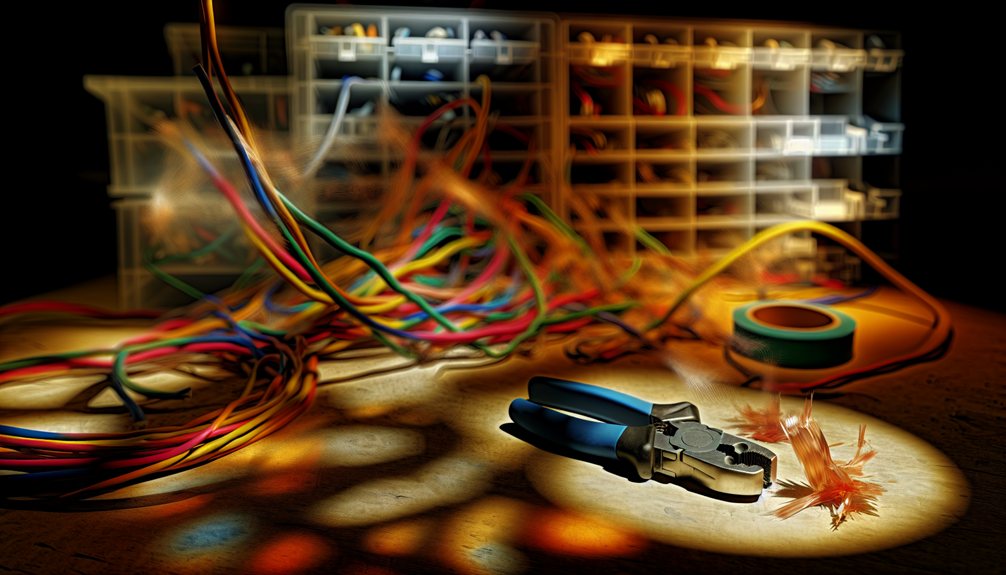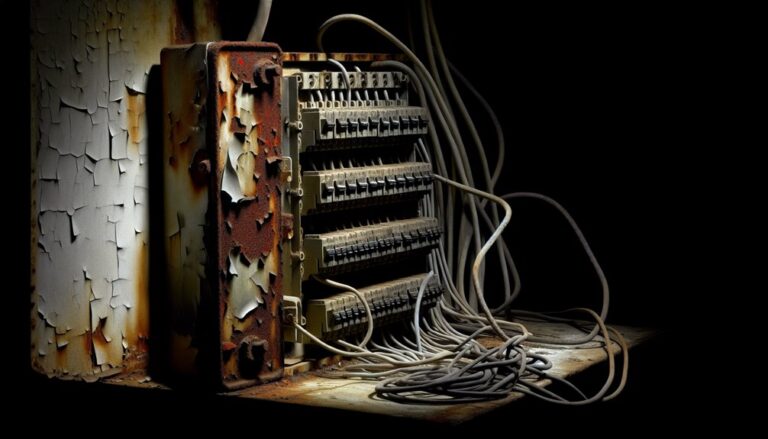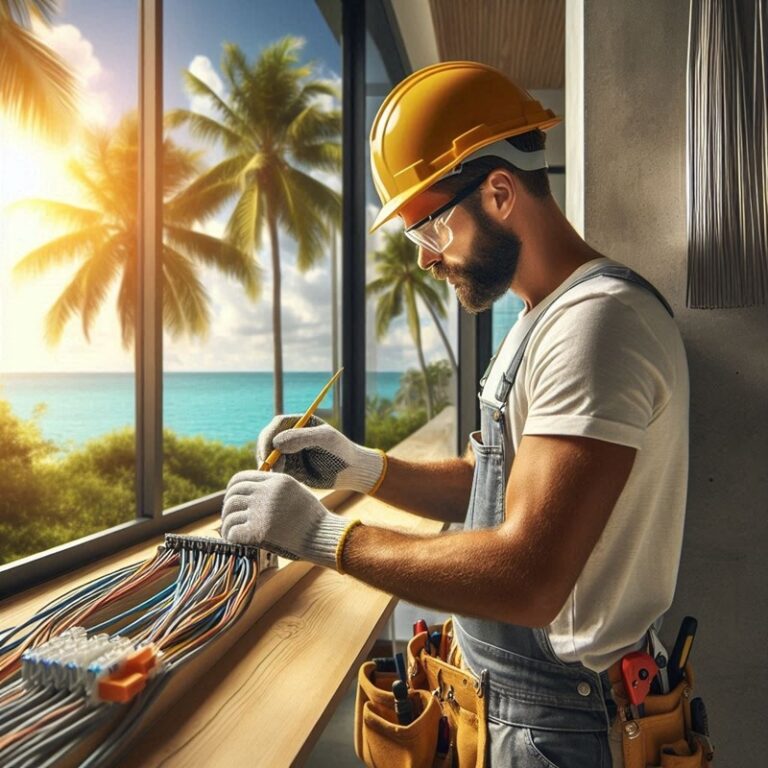How to Fix Faulty Wiring
To fix faulty wiring, first turn off the circuit breaker to guarantee safety. Use a voltage tester to confirm no live wires are present. Inspect for common issues like frayed wires, loose connections, or discoloration around outlets. Use wire cutters and a multimeter for repairs. Once everything’s secure, restore power and test the circuit. Always prioritize safety, and if problems persist, you might want to contemplate professional help for more complex issues. Learn more about troubleshooting steps.
Key Takeaways
- Always turn off the circuit breaker and use a voltage tester to ensure no live wires are present before starting repairs.
- Inspect wiring for visible damage, such as frayed insulation or loose connections, and replace or repair them as needed.
- Utilize tools like wire cutters, strippers, and a multimeter to troubleshoot and fix faulty wiring effectively.
- Secure connections with electrical tape and ensure all exposed wires are properly insulated to prevent hazards.
- If issues persist or involve complex problems, consult a professional electrician for safety and compliance with local codes.
Identifying Common Wiring Issues
When you suspect faulty wiring in your home, it’s crucial to identify common issues before attempting any repairs.
Start by checking your circuit breakers for tripped switches, which can indicate overloads or short circuits.
Next, pay attention to wiring colors; for instance, black wires typically carry current, while white wires are neutral.
If you notice exposed or frayed wiring, that’s a significant safety concern and should be addressed immediately.
Look for signs of overheating, like discoloration around outlets.
Additionally, flickering lights often signal loose connections or faulty wiring.
Safety Precautions Before Starting Repairs
Before you start any electrical repairs, it’s essential to prioritize safety to prevent accidents and injuries.
Identify and eliminate potential electrical hazards by turning off the circuit breaker or removing the fuse associated with the work area. Always use a voltage tester to verify no live wires are present.
Equip yourself with personal protective equipment, including insulated gloves, safety goggles, and non-slip footwear.
Keep your workspace dry and free from clutter to avoid tripping hazards. Never work alone; have someone nearby in case of emergencies.
By taking these precautions, you’ll mitigate risks and create a safer environment for your repair tasks.
Tools and Materials Needed for Wiring Fixes
Having guaranteed a safe working environment, it’s time to gather the right tools and materials for fixing faulty wiring.
You’ll need a set of wire cutters and strippers, which are essential for handling various wire gauges. A screwdriver set, including both flathead and Phillips, is vital for accessing electrical boxes. An insulated multimeter will help you test voltage and continuity, ensuring safety during repairs.
Don’t forget electrical tape for securing connections and insulating exposed wires. A wire connector assortment will also be necessary for joining wires securely.
Finally, consider having a flashlight on hand to illuminate dark spaces. With these tools and materials ready, you’ll be well-equipped to tackle any wiring issues safely and effectively.
Step-by-Step Guide to Fixing Faulty Wiring
Fixing faulty wiring requires a systematic approach to guarantee safety and effectiveness.
Start by turning off the power at the circuit breaker to prevent electrical shock. Use a multimeter to conduct wiring troubleshooting, checking for voltage and continuity in the affected circuit.
Inspect the wiring for visible damage, such as frayed insulation or loose connections. If you identify any faulty components, disconnect them carefully.
Replace or repair the damaged sections using appropriate methods and materials. Ascertain all connections are secure and insulated properly.
Once you’ve completed the repairs, turn the power back on and test the circuit to confirm proper functioning.
Regular electrical maintenance can prevent future issues, so stay vigilant with your inspections.
When to Call a Professional Electrician
While you may feel confident handling minor electrical issues, there are crucial situations when calling a professional electrician is essential for your safety.
If you encounter frequent circuit breaker trips, flickering lights, or burning smells, don’t hesitate to reach out for help. These signs may indicate serious wiring problems that require immediate attention.
Additionally, if you’re unsure about local electrical codes or need thorough wiring inspections, professionals can guarantee compliance and safety standards are met.
Remember, electrical work can be dangerous, and mistakes can lead to severe consequences, including fires or electrocution.
Prioritize your safety by knowing when to call in an expert to address complex issues that go beyond your expertise.
About Us
We understand that electrical issues can be stressful and overwhelming. That’s why we are here to lend a helping hand and provide you with the best electrical services in town. As a team of experienced electricians, we take pride in our ability to solve any electrical problem with precision and care.
Pages
Follow us
© 2025 By Electrician Fort Lauderdale Today







